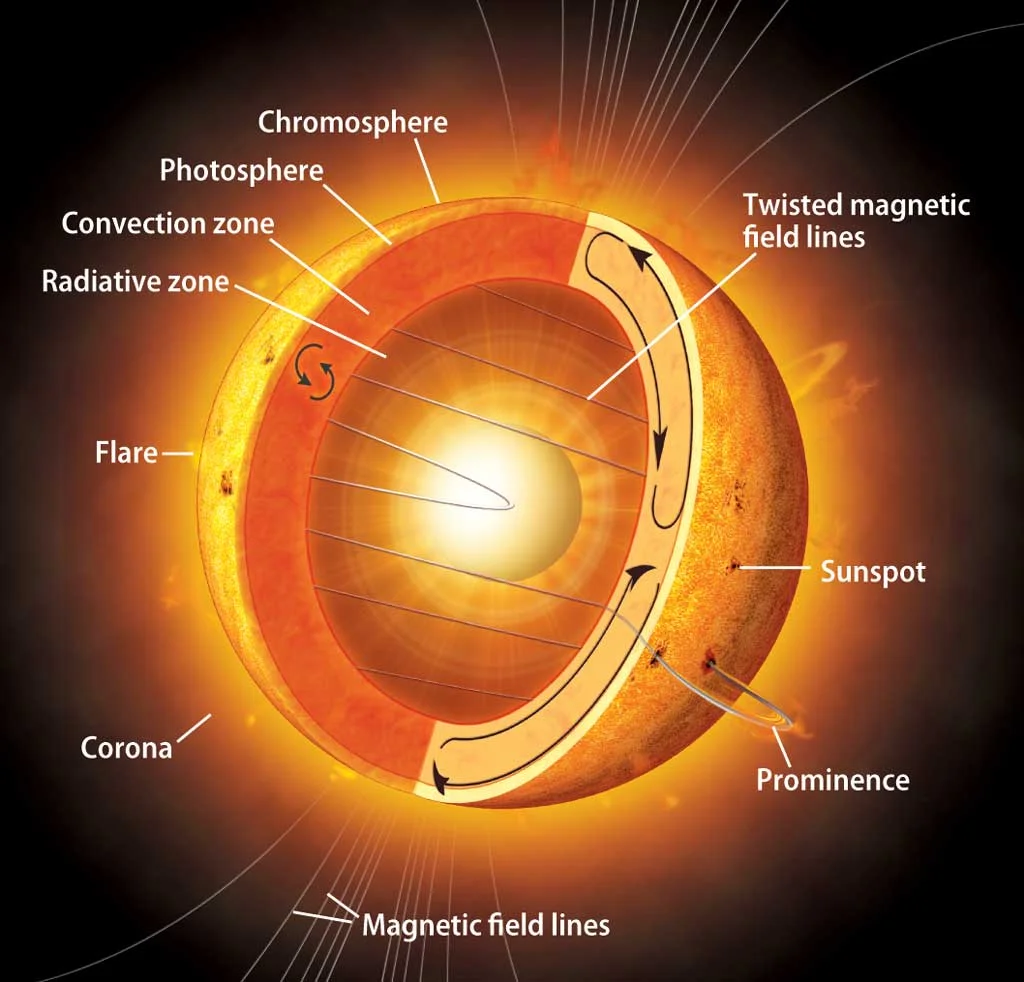Yesterday, on Christmas Eve Dec. 24, at 6:40 AM EDT, NASA’s space probe, “Parker Solar Probe,” approached the closest to the Sun, with an approximate distance of 3.86M Miles. The spacecraft was launched in 2018 to observe our sun and its “Outer Corona”. Interestingly, the probe is the fastest object ever built by humanity, as fast as 690,000 km/h or 191 km/s, nearly 0.064% of the speed of light.
Dr Nicola Fox, head of science at NASA, told BBC News: “For centuries, people have studied the Sun, but you don’t experience the atmosphere of a place until you actually visit it.
Since the closest approach is 3.8M miles (6.2M km) from the surface of the Sun, that doesn’t sound close. Still, NASA’s scientist Dr. Nicola Fox puts it like this, “We are 93 million miles away from the Sun, so if I put the Sun and the Earth one meter apart, Parker Solar Probe is four centimeters from the Sun – so that’s close.”
The probe has been designed to withstand high temperatures of up to 2,500° Fahrenheit (1,370° Celsius) with its Thermal Protection System. During its flyby, the probe will endure temperatures up to 1,400C and this amount of radiation could frazzle its onboard electronics. It is protected by the shield, which is 11.5cm (4.5 inches), and made of carbon composite, and the spacecraft is expected to tactically get in and out fast, with the highest possible speed ever achieved by any human-made object yet.
In fact, in human terms, this is the equivalent of catching a flight from New York to London in less than 30 seconds, with a mindblowing speed of 430,000mph. This massive speed comes from the gravitational pull it faces from the sun, as travels through the Perihelion.

One of the very longstanding mysteries is the outer atmosphere of the Sun, which we call the “Corona”, solar physicists know that “The corona is really, really hot and we don’t know its explanation” – Shockingly, the surface of the Sun is about 6000C(5772K) but its corona, the outer atmosphere is measured to be millions of degrees, which we see during solar eclipses. The question is, how is the atmosphere is more hotter?
Through this mission, scientists to understand the Corona – the constant solar wind bursting out of it. We also see these particles interacting with our Earth’s magnetic field and give us the views of beautiful “Northern Lights”. This also causes space weather problems, causes problems such as solar pressure for our satellites, electronics, and communication systems.

That’s why scientists, think, that “By understanding the Sun and its activity in detail, the space weather, the solar wind, we can understand more about its effect on our daily lives”
NASA scientists had waited for this Christmas for the Solar Parker Probe to reach the nearest flyby of the Sun, and still be ‘safe’ for future observations, and they recently tweeted, through @NASASun, “Parker is amid its flyby and can’t communicate with us until Dec. 27, when it will send its first signal to let us know it’s safe.” – Hopefully, it will be safe and help us explore the solar secrets to a more detail.
More from the Author: The Fundamentals and Applications of the Blockchain World with Boone Bergsma

Fouz Siddiqui is a writer, academic and scientific management person. Presently, he is a Co-founder and Chief Information Officer at Scientia Magazine. As CIO, he oversees the implementation and strategization of Scientia’s technological and scientific vision. Concurrently, In academia, he holds a Lecturer and QM position at ATH – IST. As an academic, his research interests are Exoplanetary Sciences within Astronomy. Furthermore, he also works with Kainaat Studios, as its Manager of Science Outreach.

